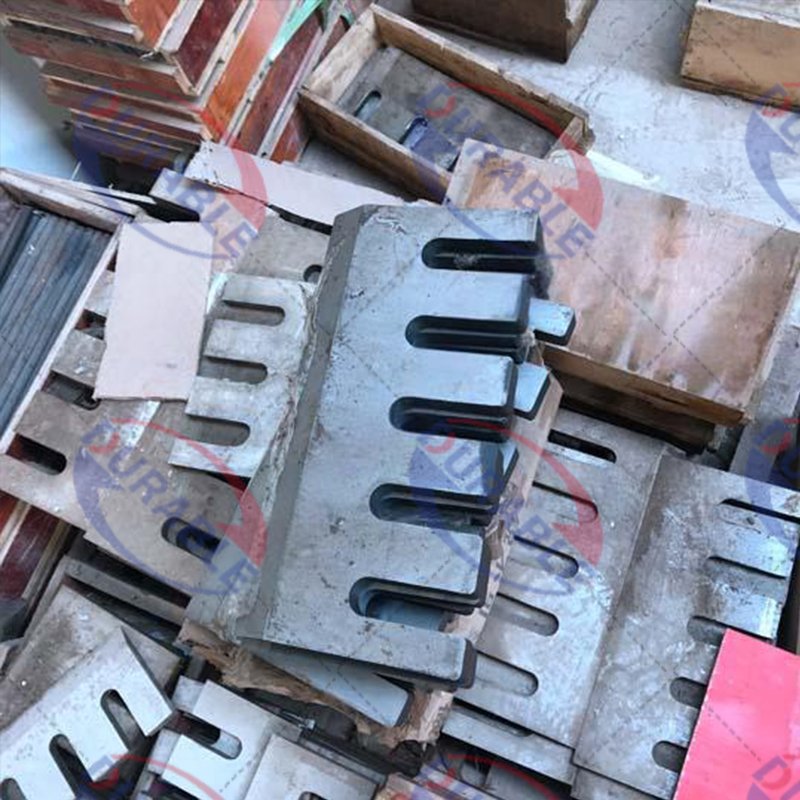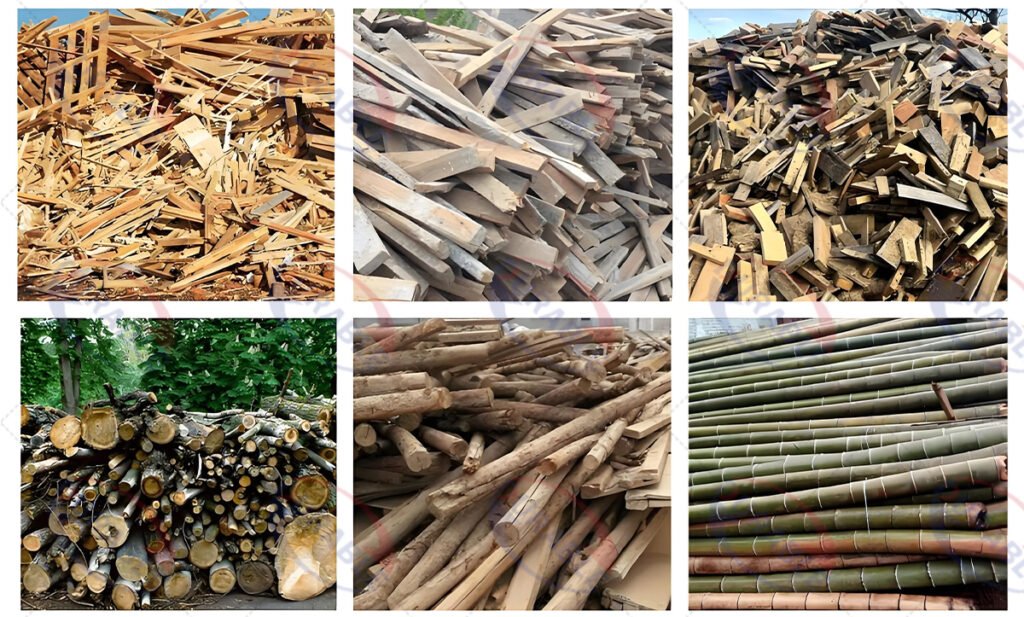7 Reasons for a Decline in Wood Crusher Output (& How to Fix It)
At Durable, we understand your frustration. Your wood crusher was performing perfectly, and now, suddenly, you’re experiencing a major wood crusher output decline. This is a common problem, and the immediate reaction is often to blame the machine itself. However, in our experience, 90% of these issues are not due to machine failure but to operational factors that can be quickly identified and fixed. Think of your crusher not just as a box with blades, but as a high-speed aerodynamic system. Understanding this concept will change how you diagnose every problem.

Table of Contents
- The Most Common Culprit: Are Your Blades or Hammers Still Sharp Enough?
- Check the Infeed and Discharge: Is There a Visible Clogging Problem?
- How’s Your Screen? Is It Blinded by Wet Material?
- What About Your Raw Material? Is it Wetter, Bigger, or Harder Than Usual?
- Power Check: Are the Motor Speed and Belt Tension Correct?
- Listen to the Machine: Are There Unusual Noises or Vibrations?
- How to Fundamentally Prevent Output Decline and Keep Your Crusher at Peak Performance?
- Conclusion: You Are in Control of Your Crusher’s Performance
- About Durable
The Most Common Culprit: Are Your Blades or Hammers Still Sharp Enough?
This is the first place everyone looks, but there’s a crucial detail most people miss. The problem isn’t just about “sharpness”; it’s about the cutting angle.
Dull blades don’t just cut slower; they change the physics of the operation. New blades have a precise angle that allows them to slice and chip the wood efficiently. As the blade wears down, this angle becomes rounded. The blade stops slicing and starts smashing and grinding the wood. This brute-force method requires far more energy, generates more heat, and dramatically increases the load on the motor, causing a significant drop in output. It’s the difference between using a sharp axe and a sledgehammer.


Practical advice for you:
- Regularly inspect your blades or hammers for wear.
- Don’t just sharpen them randomly with a hand grinder; this can ruin the cutting angle.
- If your machine’s design allows, flip the blades to use the fresh edge. Otherwise, replace them. The cost of new blades is minimal compared to the lost production and increased electricity costs from running an inefficient machine.
Check the Infeed and Discharge: Is There a Visible Clogging Problem?
Before diving into complex mechanical issues, always start with a simple visual inspection. Crusher clogging is a frequent cause of output decline.
Look for material buildup in two key areas:
- Infeed Chute: Overfeeding, or trying to crush material that is too large or bulky, can create a bridge of material at the entrance to the crushing chamber. This restricts new material from entering, starving the machine.
- Discharge Port: Check the area where the finished material exits the machine. If the downstream conveyor belt is too slow or has stopped, material will back up and clog the crusher’s exit.
This is a simple check, but it’s often overlooked. Ensure a clear path for material to enter and exit the machine smoothly.
How’s Your Screen? Is It Blinded by Wet Material?
The screen is not just a filter; it’s the “exhaust pipe” of your crushing system. This is a critical concept in troubleshooting wood crusher issues.
A clogged screen suffocates your machine. A hammer crusher, for example, generates a powerful internal airflow. This airflow is what expels the correctly sized particles through the screen holes. If you are processing wood with higher moisture content (e.g., above 15%), the fine wood powder can become sticky. This sticky powder plasters over the screen holes, a problem known as “screen blinding.” Even if only a third of the screen is blocked, your output can drop by over 50% because the finished material is trapped inside, spinning uselessly and consuming energy.

Practical advice for you:
- Make regular screen cleaning part of your crusher maintenance checklist.
- If you frequently process damp materials, consider using a screen with slightly larger holes. While the output might be a bit coarser, it ensures the system can “breathe,” maintaining overall throughput. It’s better to produce efficiently than to be stopped by a clog.
What About Your Raw Material? Is it Wetter, Bigger, or Harder Than Usual?
Your crusher is calibrated for a specific type of material. Any “invisible” changes in your raw material can have a massive impact on performance.

Think about these factors:
- Moisture Content: This is the biggest variable. Wood that feels dry to the touch could have its moisture content increase from 12% to 25% during a rainy season. This extra moisture makes the wood tougher and stickier, requiring much more energy to crush.
- Wood Type and Density: Were you crushing soft pine yesterday but today you’re processing a mix that includes hard oak? Hardwoods require significantly more force to break down, which will naturally lower your tons-per-hour output.
- Size and Shape: Are you feeding more large, blocky offcuts than usual? These take longer to break down than smaller, uniform chips.
Practical advice for you:
- Establish a basic incoming material inspection process. A simple moisture meter is a highly valuable, low-cost tool. Knowing your material is the first step to controlling your output.
Power Check: Are the Motor Speed and Belt Tension Correct?
Your crusher’s motor and drive system are its heart. If the heart isn’t pumping at full strength, the whole system suffers.
Two simple checks can solve many power-related issues.
- Listen to the Motor: Does it sound like it’s running at its normal speed, or does it sound like it’s straining or struggling? A drop in motor RPM under load is a clear sign of a problem.
- Check Belt Tension: The V-belts that transfer power from the motor to the crusher’s rotor must be properly tensioned. If the belts are too loose, they will slip on the pulleys under load. You’ll hear a screeching sound, and the rotor won’t get the full power it needs to crush effectively. If they are too tight, they will put excessive strain on the motor and rotor bearings, leading to premature failure.
A quick check of belt tension should be a weekly maintenance task.
Listen to the Machine: Are There Unusual Noises or Vibrations?
An experienced operator can diagnose a machine just by listening to it. A healthy crusher has a consistent, powerful roar.
Abnormal sounds are warning signs that you should not ignore.
- Loud Banging or Clanging: This could indicate that a hammer or blade has broken loose inside the crushing chamber. Stop the machine immediately to prevent catastrophic damage.
- Rumbling or Grinding Noise: This often points to a failing bearing. A worn-out bearing increases friction and robs the machine of power before it eventually seizes up completely.
- Excessive Vibration: This could be caused by a worn or unbalanced rotor, or by hammers that have worn unevenly. An unbalanced rotor is inefficient and puts immense stress on the entire machine frame.
If you hear anything out of the ordinary, shut down the machine safely and investigate.
How to Fundamentally Prevent Output Decline and Keep Your Crusher at Peak Performance?
Preventing problems is always cheaper than fixing them. A proactive crusher maintenance strategy is the key to consistent, high output.
Here are the three pillars of crusher reliability:
- Consistent Feeding: The most common cause of inefficiency is inconsistent feeding. “Starving” the machine and then “choking” it is highly inefficient. The best investment you can make is a simple conveyor belt to provide a steady, even flow of material. This alone can often boost consistent output by 20-30%.
- System Airflow: Remember that your crusher is an air pump. Ensure the entire system, including any downstream ducting and dust collectors, is clean and unobstructed. A blocked dust collector can create “back pressure” that prevents material from exiting the crusher, killing your output.
- Create a Checklist: Develop a simple daily and weekly crusher maintenance checklist. This should include checking blades, cleaning the screen, checking belt tension, and listening for unusual noises. This five-minute routine will save you countless hours of downtime and lost production.
Conclusion: You Are in Control of Your Crusher’s Performance
A sudden wood crusher output decline is rarely a mystery. By thinking like an engineer and systematically checking these seven key points, you can quickly diagnose and solve the vast majority of problems. It starts with understanding that your crusher is a dynamic system, not just a simple machine. By paying close attention to your blades, screen, raw material, and power systems—and by feeding it consistently—you can move from reactive crusher repair to proactive maintenance, ensuring your machine delivers the peak performance and profitability you expect.
About Durable
At Durable, we don’t just sell machines; we provide production solutions. We have seen firsthand how operational practices can make or break the performance of even the best equipment. Our heavy-duty wood crushers are designed for reliability and ease of maintenance, but we also provide the expert guidance to help you operate them at their full potential.
If you’re facing persistent production issues or looking to build a new, efficient crushing line, contact our team. We can help you design a system that is robust, reliable, and ready to meet your production goals.
 Durable Machinery
Durable Machinery